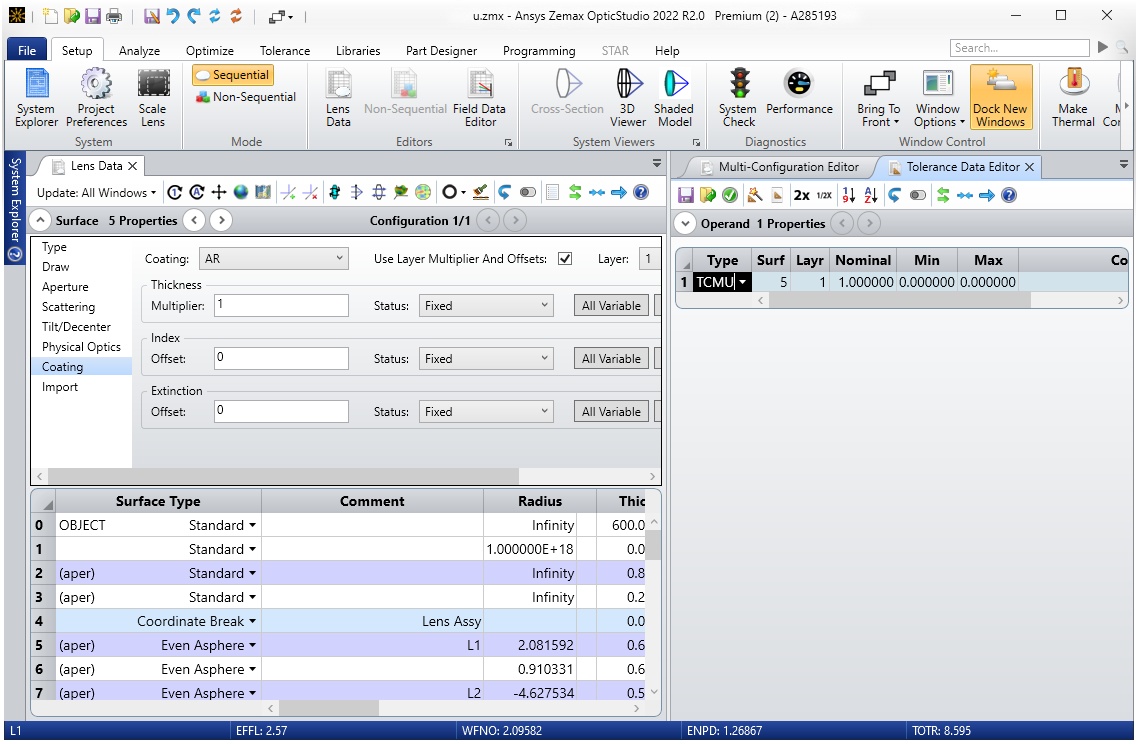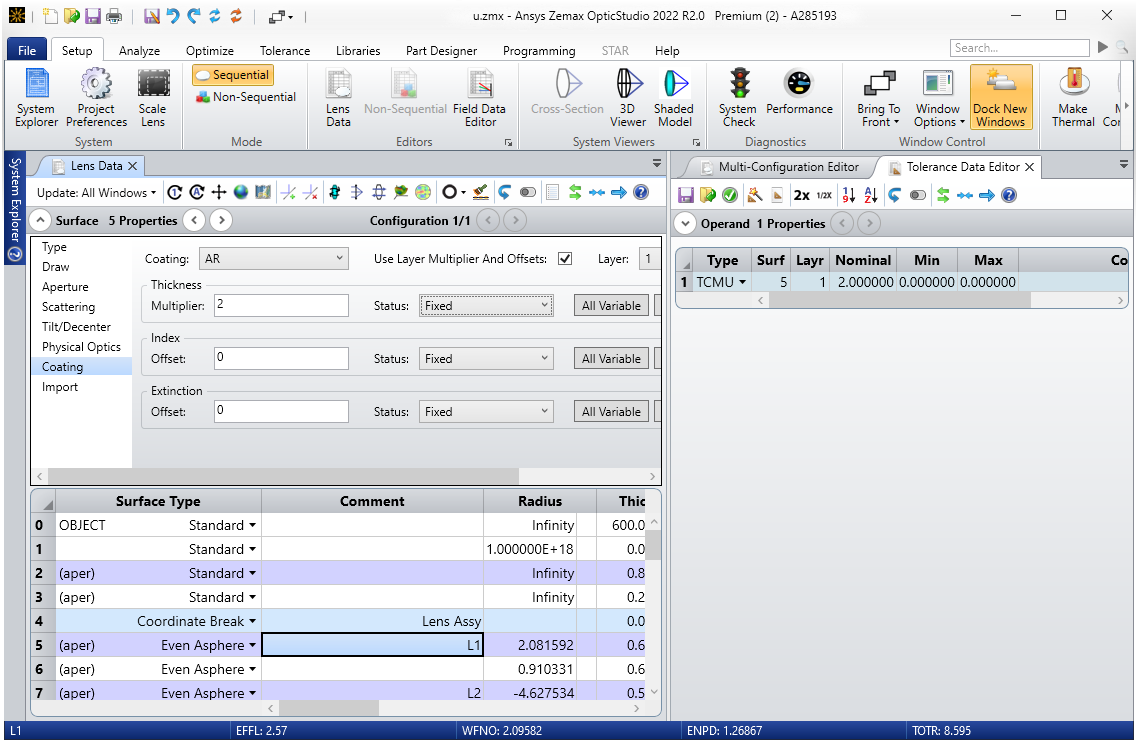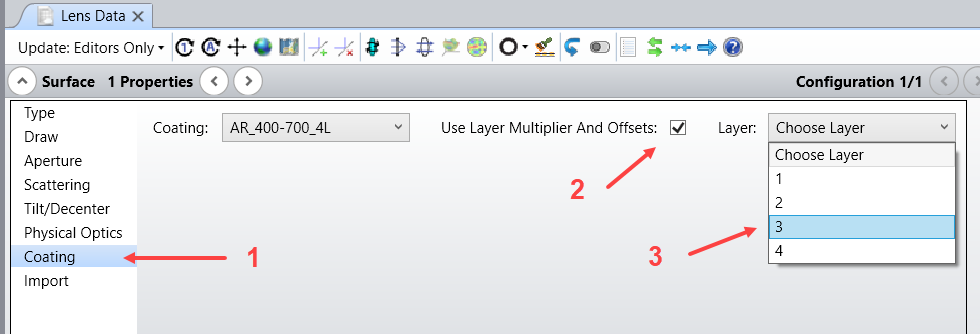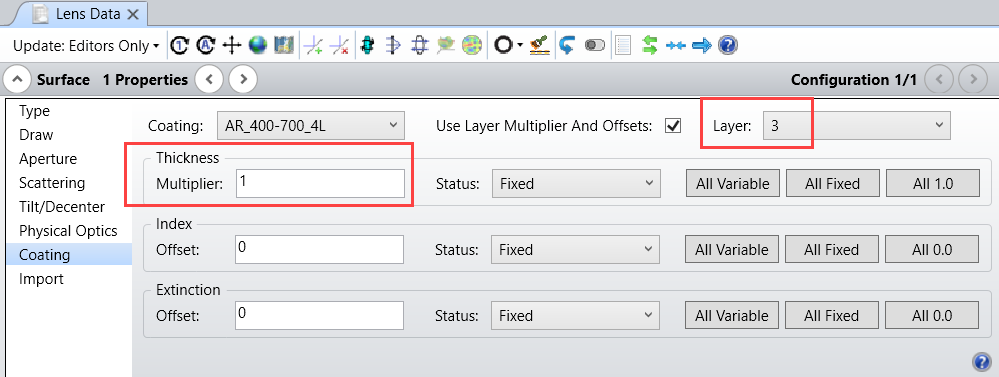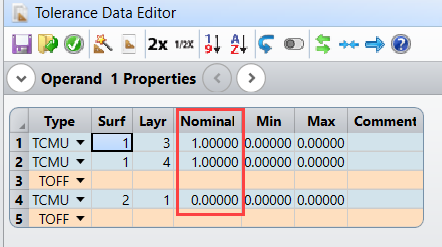There’s a “Nominal” field associated with the TCMU tolerance. With other tolerances (like TRAD), the nominal field is populated with a non-zero value but I don’t see that nominal field being populated with regard to coating layer thicknesses. Is the user expected to input each layer thickness in the “nominal” TCMU field or is that not necessary? Thanks.
Solved
TCMU Tolerance
Best answer by Jeff.Wilde
Okay, I should have recalled this straight away, but in any event the min/max values are *changes* from the nominal.
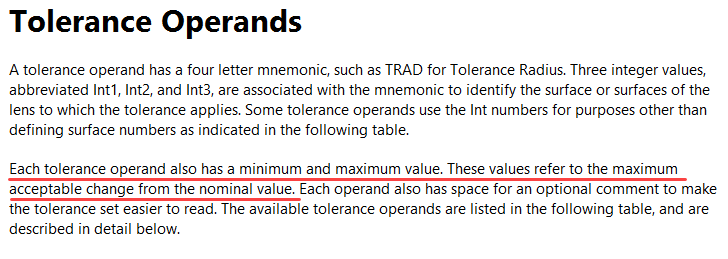
So, if you use +/- 0.03 with a nominal value of 1.0, then you will see +/- 3% changes in the coating thickness.
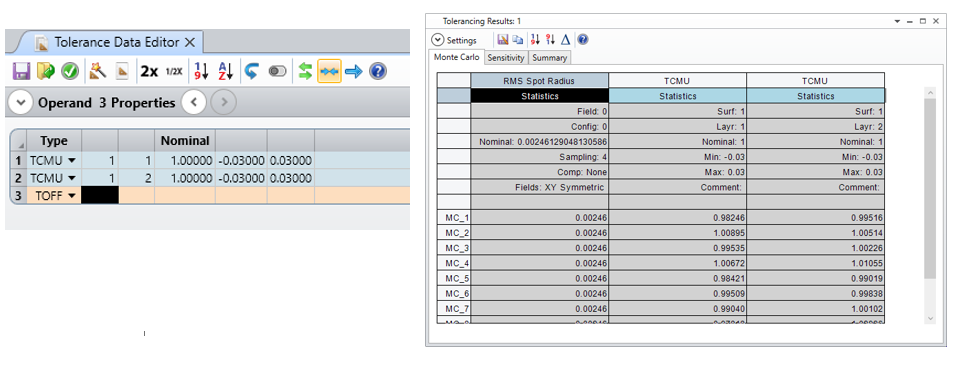
Regards,
Jeff
Reply
Enter your E-mail address. We'll send you an e-mail with instructions to reset your password.





